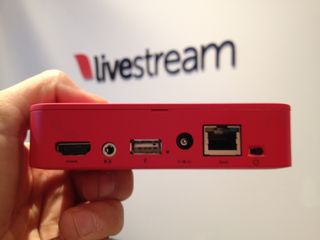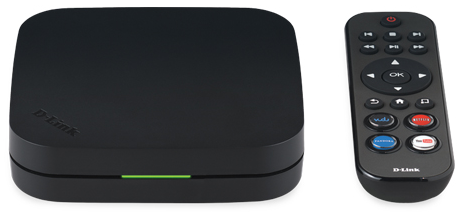I've been quiet on the blog for the past two weeks as I have been finalizing the Streaming Media East program as well as the program for the Content Delivery Summit. The Streaming Media East program is nearly complete with just a few spots left to fill. The agenda for the CDN Summit will be posted this week.
Below is what I have left to fill at the Streaming Media East show. If you are interested in one of these positions, please contact me ASAP. Any emails that simply say "I want to speak" with no other details on who you are, what your background is, how you are a fit for the session etc. will be ignored. If you want to speak, please make the effort to tell me how you are a fit for that session.
Tuesday, May 15, 2012
Making a Living on YouTube
Long gone are the days of cute kitten videos offering the only hope for "going viral," but is it possible to make a living creating YouTube videos? As the audience grows more savvy and technology more accessible, the quality of content that reaches the millions of views mark needs to be more engaging and of higher production value than ever before. Meet some of the creators who are reaching these milestones consistently, as well as advertisers trying to gain access to these creators' huge audiences.
Moderator: Jenni Powell, Content and Speaker Coordinator, VidCon
Panelist: Lauren Francesca, Actress, Creator, "Key of Awesome"
Panelist: Francesca Ramsey, YouTube Creator
Panelist: Randy Frank, Co-founder, Headquarters Studios
Panelist: One spot open
Tuesday, May 15, 2012
Will Internet TV Accelerate Online Video's Growth or Keep Television Stronger than Ever?
While cord cutting has yet to make any real impact on the cable TV business, in the future all devices will be connected and more content choices will be available. Traditional television still remains as strong as ever while online video has, in some ways, failed to disrupt the broadcast industry. In this session, content owners and CE manufactures will debate whether over-the-top (OTT) connected devices and platforms will accelerate the flow of consumers away from television and onto the web and outline what OTT services have the best shot at disrupting cable TV.
Multiple panelist spots open.
Wednesday, May 16, 2012
Unique Deployment Challenges For Mobile Video In The Enterprise
"Help! My CEO wants video on his iPad." Deploying mobile video in the enterprise presents many challenges that are unique to enterprise environments. Major considerations include encoding video for mobile devices, choosing the correct servers, and delivering to multiple devices and players—especially now that Flash will no longer be supported on mobile devices. The final challenge we'll discuss is networking, as enterprises need to determine if users are going to access the video over the enterprise Wi-Fi network or the public cellular network.
Multiple panelist spots open, for end-user enterprise customers.
Wednesday, May 16, 2012
Down and Dirty: Live Streaming on a Budget
In this panel we'll explore the tools and techniques for streaming live on a small budget. This session will discuss the entire webcasting workflow, including how to get the video signal from the site to end user; how to build an audience; when to use multi-bitrate streaming; strategies to consider for reaching mobile devices; and how to leverage social media platforms.
Multiple panelist spots open, for end-user customers.
Wednesday, May 16, 2012
The Business of TV Everywhere
Programmers and service providers have begun to strike deals that are making TV Everywhere a reality. But what business models will be the impetus for more deals that will make even more content available? What will that mean for traditional streaming video providers and the technology companies that support them? Finally, how are the over-the-top players going to fare against competition from the incumbents on this front? This session looks at how the market for TV Everywhere is evolving, the business challenges that need to be overcome to reach maturity, and how to measure success.
Multiple panelist spots open.
Wednesday, May 16, 2012
How MSOs Can Defend Against Cord Shaving
This panel will discuss how MSOs can improve their value to younger audiences (e.g., adapting to technological preferences such as allowing smartphones and tablets to act as remote controls), and how they can make a true stand against cord-shaving by offering video on multiple devices (e.g., TV Everywhere), superior video quality, and enhanced content recommendation and selection guides.
Multiple panelist spots open.
Wednesday, May 16, 2012
Best Practices For Video Workflow In The Cloud
A number of vendors offer cloud based video publishing platforms, the features and functionality—not to mention cost—vary widely. Some vendors focus their solutions on content management and monetization, while others are geared towards enabling syndication and interactive advertising campaigns. This session will lay the groundwork for content owners to better understand which type of cloud based publishing platform is best, what benefits the cloud provides to their business and ways to streamline their video workflow.
Multiple panelist spots open, for end-user customers who use cloud based platform services.
 It's not too often I see new products that I think will truly disrupt the industry, but this morning, Livestream announced a new hardware encoder that really should change the market for webcasting professionals. Called the Livestream Broadcaster, this $495 encoder makes encoding and distributing live HD events to the web and mobile devices easy and really, really affordable. (see below for more photos)
It's not too often I see new products that I think will truly disrupt the industry, but this morning, Livestream announced a new hardware encoder that really should change the market for webcasting professionals. Called the Livestream Broadcaster, this $495 encoder makes encoding and distributing live HD events to the web and mobile devices easy and really, really affordable. (see below for more photos)




